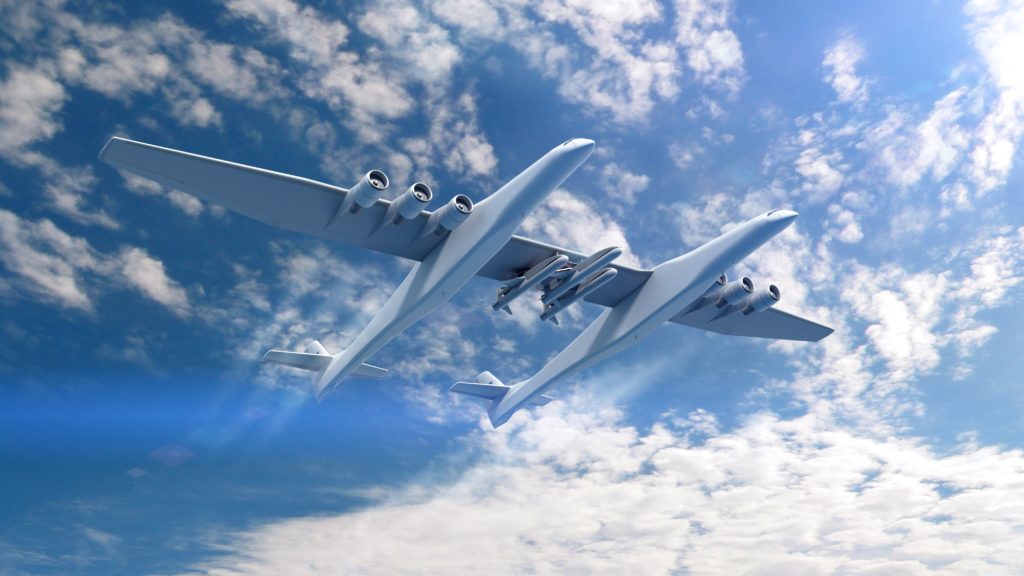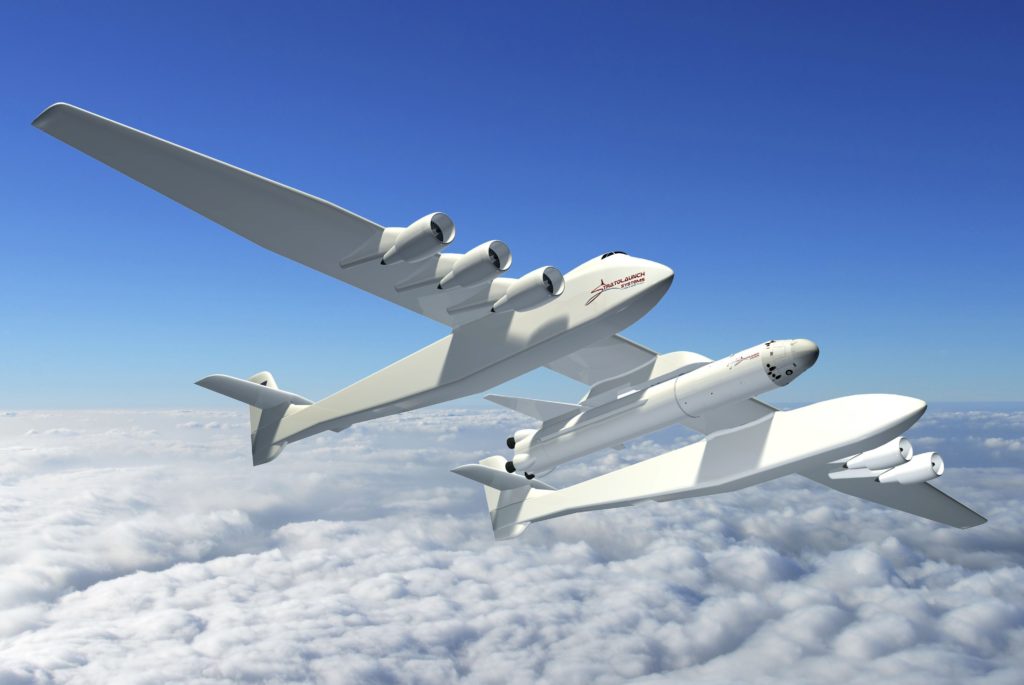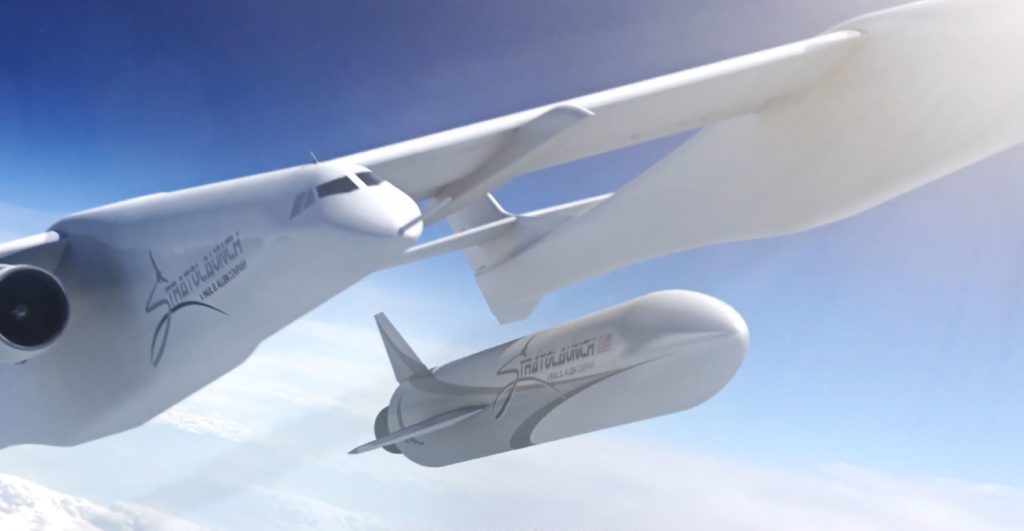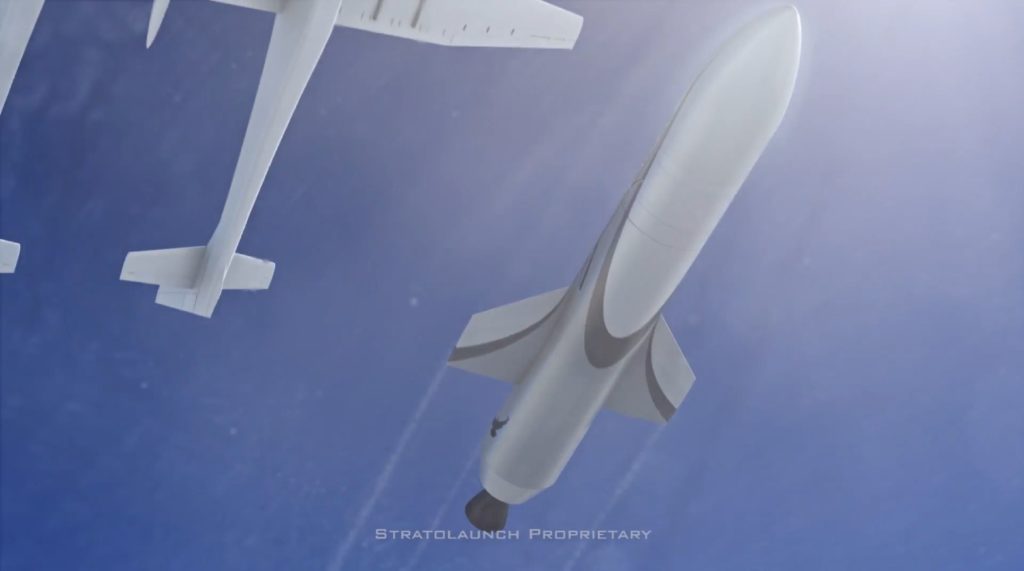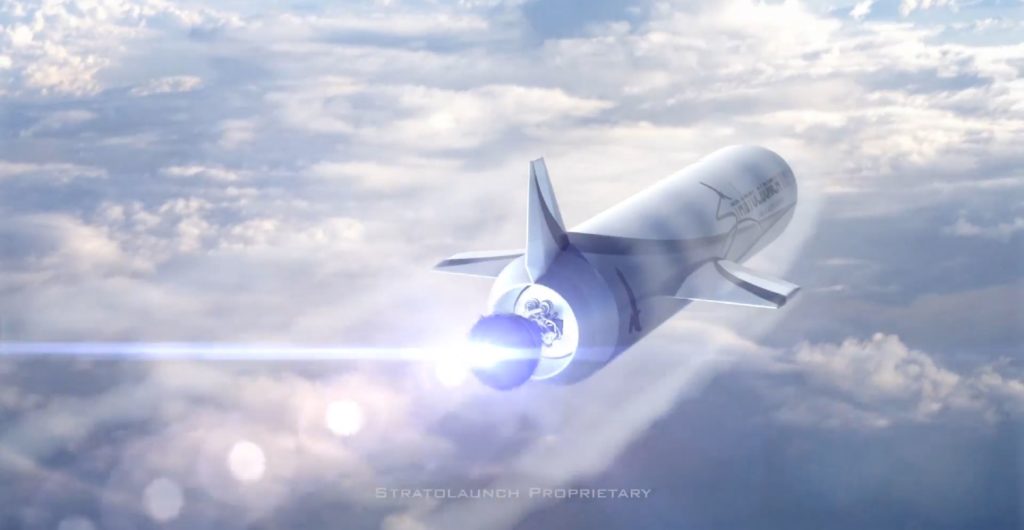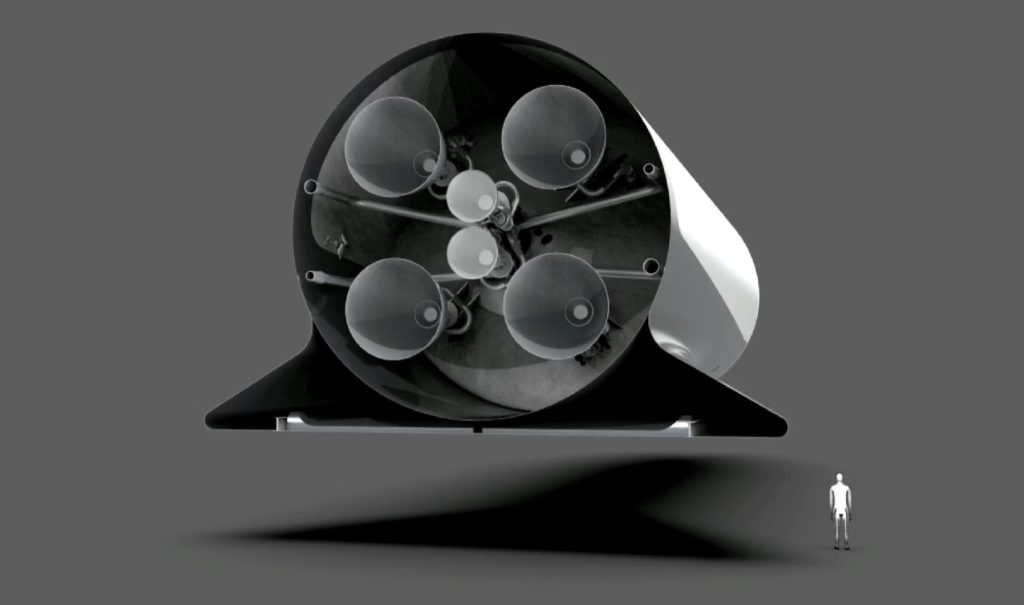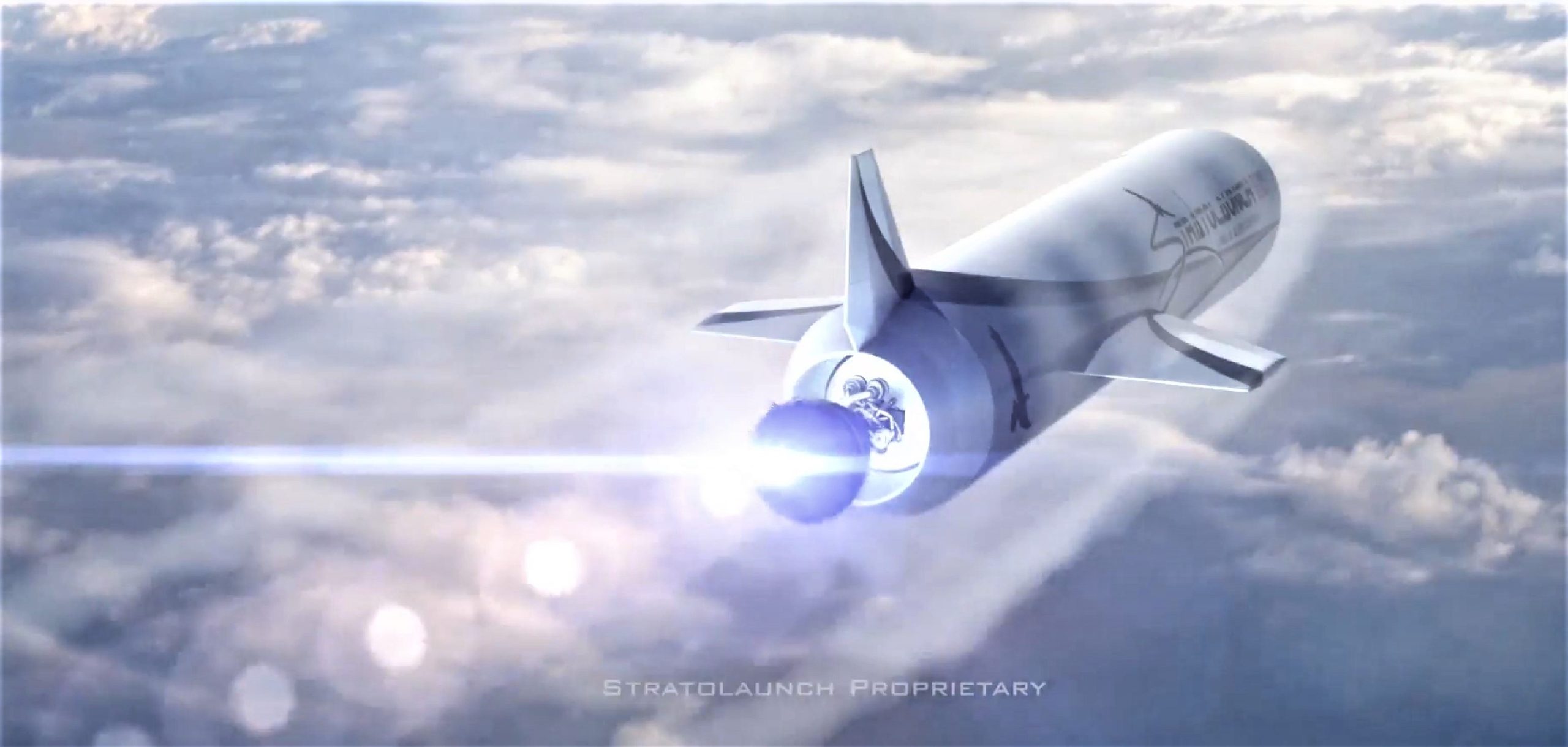
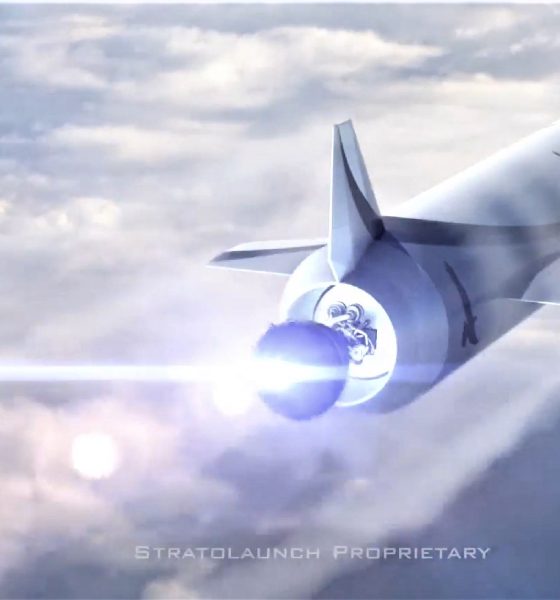
News
Ex-SpaceX engine expert to help design rockets built for launch on world’s largest jet
Stratolaunch, an aerospace company funded by Microsoft-made billionaire Paul Allen to build the world’s largest flightworthy aircraft, has announced a decision to build its own liquid-fueled rockets, to be air-launched from the aforementioned mega-plane.
Targeting an inaugural launch of the first version of the rocket – currently nicknamed “Kraken” – as early as 2022, Stratolaunch has chosen Jeff Thornburg, formerly SpaceX’s Vice President of Propulsion Engineering and the father of the company’s Mars-focused Raptor engine, to lead its foray into in-house rocket propulsion development and manufacturing.
Stratolaunch has confirmed what most people have long speculated: it’s developing its own launch vehicles for its air-launch system, including a reusable space plane that could eventually carry people. pic.twitter.com/nF9lKVe4xk
— Jeff Foust (@jeff_foust) August 20, 2018
But first: building the world’s largest aircraft
Stratolaunch’s first task at hand, however, is to begin flight-testing the largest (hopefully) operational aircraft in history, a prerequisite for the company’s longer-term orbital rocket and spaceplane aspirations. Nicknamed “Roc” after a mythical (and fictional) bird so large it could carry an elephant, the plane certainly lives up to its namesake. Featuring a full six of the same engines that power Boeing’s once-record-breaking 747 airliner and a wingspan that could easily fit three smaller 737 airliners with room to spare, it is genuinely difficult (if not impossible) to successfully convey the sheer scale of Roc outside of witnessing it in person.
Stationed in California’s Mojave Desert, the aircraft’s one and only copy is, for the most part, completed and has spent the brunt of 2018 conducting runway taxi tests, hopefully culminating in an inaugural flight test later this year or early next year. Designed to lift orbital-class rockets weighing as much as 250 metric tons (550,000 lb) to an altitude of at least 9100 meters (30,000 feet), the primary benefit of using aircraft as launch platforms derives from the simple fact that the atmospheric density at 30,000 feet is more than three times less than that at sea level. Similar to aircraft, rocket performance dramatically improves as atmospheric density decreases: less atmosphere means lower drag and pressure.
Rockets that launch from sea-level have to grapple with the difficulties of Earth’s relatively thick atmosphere at that height, with major launch events like “Max-Q” being big concerns almost solely because the dense air exerts major forces on launch vehicles and demands extreme measures like throttling down booster engines (very inefficient) and optimizing structures for aerodynamic efficiency despite the fact that rockets spend very little time operating in a significant atmosphere.
A launch pad without a rocket (sort of)
However, the simple fact of the matter is that billionaire Paul Allen’s colossal aircraft essentially does not have a single air-launched rocket in the world that can properly take advantage of its capabilities. Originally sized and designed with an air-launched version of SpaceX’s Falcon 9 in mind, that relationship folded amicably after roughly a year (2012), at which point SpaceX realized it would need to almost completely redesign a unique variant of Falcon 9. Your author will readily admit that they have admired the insanity of such a massive plane while still severely doubting its practical utility.
Thankfully, it appears that Allen is adamantly opposed to the idea that Stratolaunch is some silly whim to build the world’s largest plane. Rather, he is exceptionally reserved and pragmatic when discussing the aerial launch platform, according to a recent and extensive interview by Wired Magazine’s Steven Levy.
“Allen isn’t one to show exuberance, and when he speaks about the plane he focuses on its future utility. ‘When you see that giant plane, it’s a little nutty,’ he says. ‘And you don’t build it unless you’re very serious, not only about wanting to see the plane fly but to see it fulfill its purpose. Which is getting vehicles in orbit.’ – Paul Allen, 2018
- Stratolaunch’s Roc shown with a triplet of Orbital ATK Pegasus XL rockets. (Vulcan Space)
- Back in 2012, SpaceX briefly entertained the idea of a Falcon 9 variant optimized for air-launch, potentially including crew rating the rocket down the road. (Stratolaunch/Dynetics)
- The Roc is inconceivably vast. (Stratolaunch)
Currently, Orbital ATK’s (now Northrop Grumman Innovation Systems) air-launched Pegasus XL rocket is the only “customer” in the world that can realistically use Stratolaunch as a launch platform, not exactly an impressive or sustainable launch vehicle with a maximum performance of less than 450 kg (~1000 lbs) to low Earth orbit for an incredible ~$40 million per (expendable) flight.
To answer that call and ensure Stratolaunch’s utility, the company reportedly began seriously considering its own in-house expendable and reusable rockets and propulsion systems sometime in 2016, plans that have since grown concrete and been publicly embedded into Stratolaunch’s overarching mission. Nicknamed “Kraken” after the mythical sea monster, the company hopes to develop an initially expendable rocket system capable of launching 3400 – 6000 kg (~7500 – 13250 lbs) into low Earth orbit with single booster and triple booster variants. Further down the line, Stratolaunch is eyeing the design and production of a fully and rapidly reusable orbital spaceplane, potentially including a version that would carry astronauts into space.
- A concept video produced by Stratolaunch shows the Roc launching a Kraken rocket. (Stratolaunch, via Wired)
- A concept video produced by Stratolaunch shows the Roc launching a Kraken rocket. (Stratolaunch, via Wired)
- A concept video produced by Stratolaunch shows the Roc launching a Kraken rocket. (Stratolaunch, via Wired)
- SpaceX’s subscale Raptor engine has completed more than 1200 seconds of testing in less than two years. (SpaceX)
- BFS (circa 2017) shows off its complement of SL and Vacuum Raptor engines. SpaceX is moving back to something similar to this. (SpaceX)
Normally, one might simply roll their eyes at yet another startup touting small(ish) expendable rockets with first launches no earlier than the early 2020s – the market is getting to be absurdly and impossibly overcrowded at this point. However, Stratolaunch differs for one fundamental and reason: they have placed ex-SpaceX propulsion executive and expert Jeff Thornburg at the helm of the company’s freshly public rocket propulsion wing. While at SpaceX, Mr. Thornburg spent all but one of his five years with the company (2011-2015) single-mindedly focused on the development and engineering of all aspects of the Raptor rocket engine, a next-generation propulsion system designed to enable SpaceX’s sustainable colonization of Mars.
Raptor is an exceptional rocket engine thanks in no small part to Thornburg’s brilliance as a propulsion engineer, and that same brilliance and half-decade of experience at the most successful rocket startup in existence could ultimately prove a massive boon for Stratolaunch’s otherwise interesting but unexceptional expendable rocket concepts.
Put simply, under Jeff Thornburg’s direction and with access to founder Paul Allen’s considerable wealth, Stratolaunch is undoubtedly worth keeping a close eye in the future, both far and near.
For prompt updates, on-the-ground perspectives, and unique glimpses of SpaceX’s rocket recovery fleet check out our brand new LaunchPad and LandingZone newsletters!

News
Tesla’s most affordable car is coming to the Netherlands
The trim is expected to launch at €36,990, making it the most affordable Model 3 the Dutch market has seen in years.
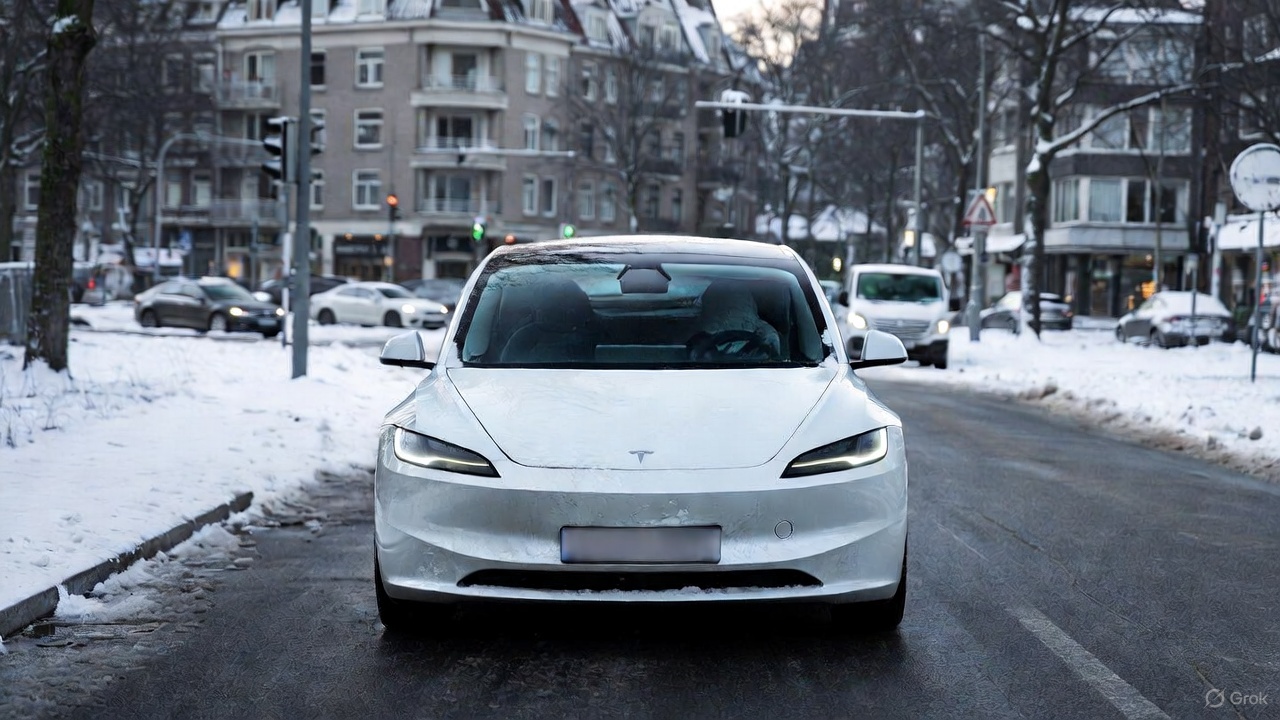
Tesla is preparing to introduce the Model 3 Standard to the Netherlands this December, as per information obtained by AutoWeek. The trim is expected to launch at €36,990, making it the most affordable Model 3 the Dutch market has seen in years.
While Tesla has not formally confirmed the vehicle’s arrival, pricing reportedly comes from a reliable source, the publication noted.
Model 3 Standard lands in NL
The U.S. version of the Model 3 Standard provides a clear preview of what Dutch buyers can expect, such as a no-frills configuration that maintains the recognizable Model 3 look without stripping the car down to a bare interior. The panoramic glass roof is still there, the exterior design is unchanged, and Tesla’s central touchscreen-driven cabin layout stays intact.
Cost reductions come from targeted equipment cuts. The American variant uses fewer speakers, lacks ventilated front seats and heated rear seats, and swaps premium materials for cloth and textile-heavy surfaces. Performance is modest compared with the Premium models, with a 0–100 km/h sprint of about six seconds and an estimated WLTP range near 550 kilometers.
Despite the smaller battery and simpler suspension, the Standard maintains the long-distance capability drivers have come to expect in a Tesla.
Pricing strategy aligns with Dutch EV demand and taxation shifts
At €36,990, the Model 3 Standard fits neatly into Tesla’s ongoing lineup reshuffle. The current Model 3 RWD has crept toward €42,000, creating space for a more competitive entry-level option, and positioning the new Model 3 Standard comfortably below the €39,990 Model Y Standard.
The timing aligns with rising Dutch demand for affordable EVs as subsidies like SEPP fade and tax advantages for electric cars continue to wind down, EVUpdate noted. Buyers seeking a no-frills EV with solid range are then likely to see the new trim as a compelling alternative.
With the U.S. variant long established and the Model Y Standard already available in the Netherlands, the appearance of an entry-level Model 3 in the Dutch configurator seems like a logical next step.
News
Tesla Model Y is still China’s best-selling premium EV through October
The premium-priced SUV outpaced rivals despite a competitive field, while the Model 3 also secured an impressive position.

The Tesla Model Y led China’s top-selling pure electric vehicles in the 200,000–300,000 RMB segment through October 2025, as per Yiche data compiled from China Passenger Car Association (CPCA) figures.
The premium-priced SUV outpaced rivals despite a competitive field, while the Model 3 also secured an impressive position.
The Model Y is still unrivaled
The Model Y’s dominance shines in Yiche’s October report, topping the chart for vehicles priced between 200,000 and 300,000 RMB. With 312,331 units retailed from January through October, the all-electric crossover was China’s best-selling EV in the 200,000–300,000 RMB segment.
The Xiaomi SU7 is a strong challenger at No. 2 with 234,521 units, followed by the Tesla Model 3, which achieved 146,379 retail sales through October. The Model Y’s potentially biggest rival, the Xiaomi YU7, is currently at No. 4 with 80,855 retail units sold.
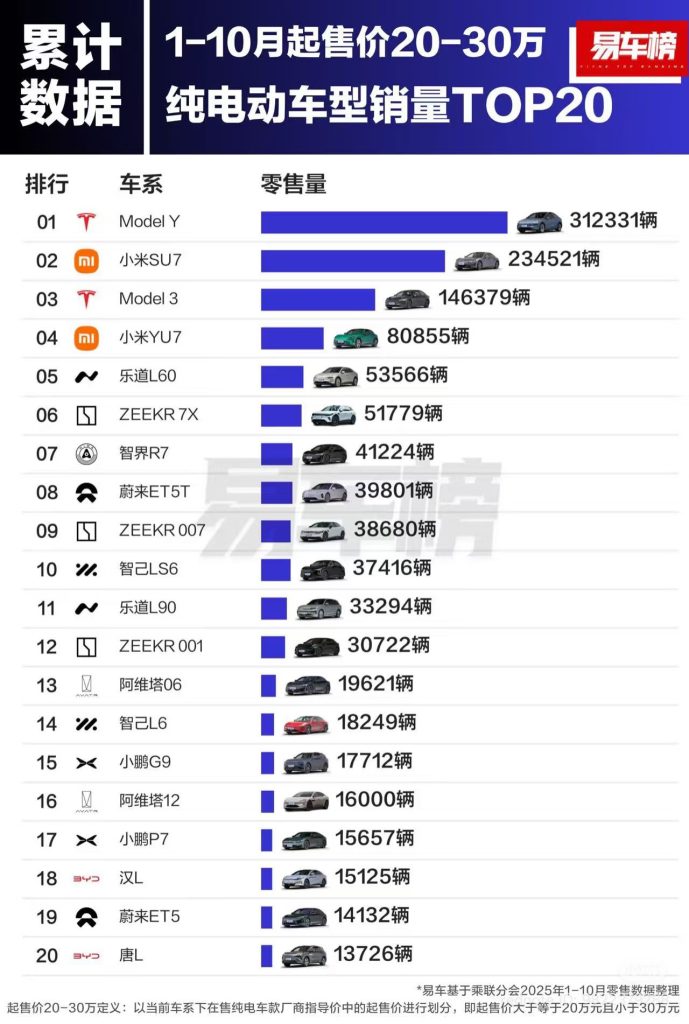
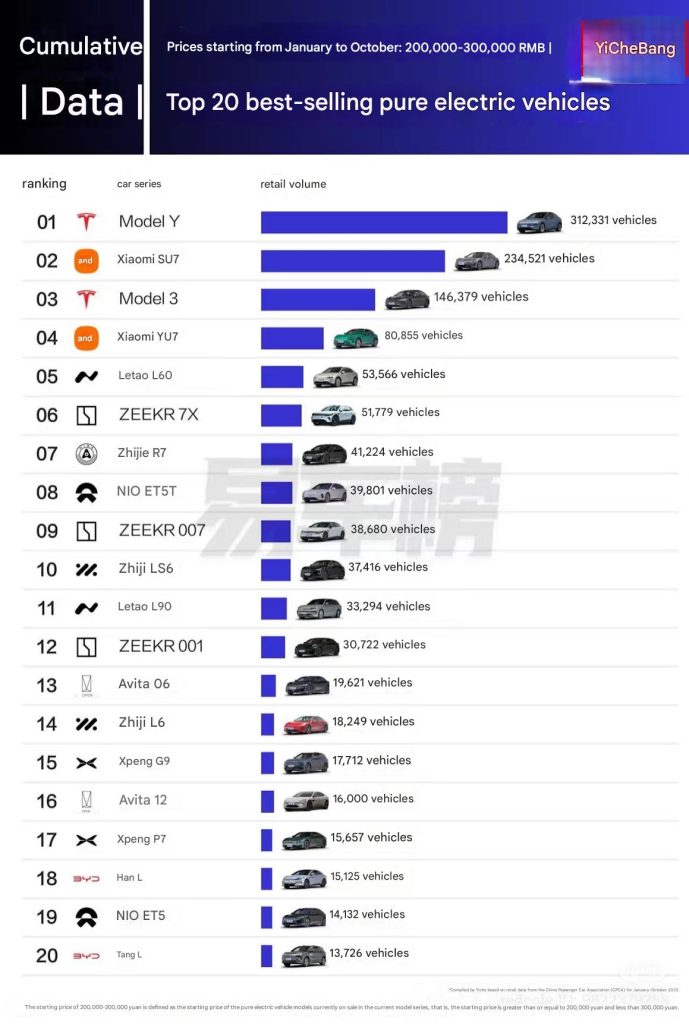
Efficiency kings
The Model 3 and Model Y recently claimed the top two spots in Autohome’s latest real-world energy-consumption test, outperforming a broad field of Chinese-market EVs under identical 120 km/h cruising conditions with 375 kg payload and fixed 24 °C cabin temperature. The Model 3 achieved 20.8 kWh/100 km while the Model Y recorded 21.8 kWh/100 km, reaffirming Tesla’s efficiency lead.
The results drew immediate attention from Xiaomi CEO Lei Jun, who publicly recognized Tesla’s advantage while pledging continued refinement for his brand’s lineup.
“The Xiaomi SU7’s energy consumption performance is also very good; you can take a closer look. The fact that its test results are weaker than Tesla’s is partly due to objective reasons: the Xiaomi SU7 is a C-segment car, larger and with higher specifications, making it heavier and naturally increasing energy consumption. Of course, we will continue to learn from Tesla and further optimize its energy consumption performance!” Lei Jun wrote in a post on Weibo.
Elon Musk
SpaceX’s Starship program is already bouncing back from Booster 18 fiasco
Just over a week since Booster 18 met its untimely end, SpaceX is now busy stacking Booster 19, and at a very rapid pace, too.
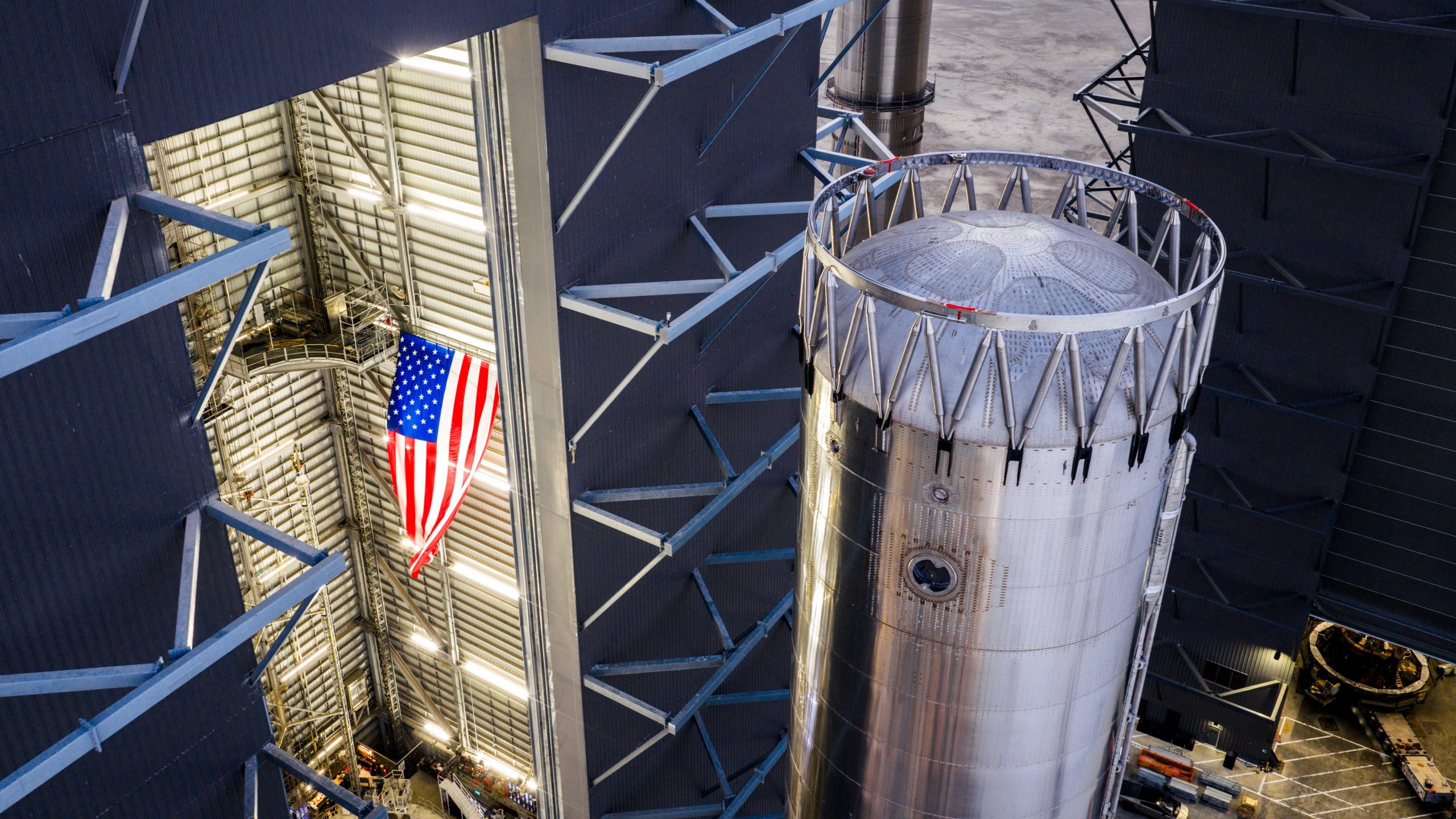
SpaceX is already bouncing back from the fiasco that it experienced during Starship Booster 18’s initial tests earlier this month.
Just over a week since Booster 18 met its untimely end, SpaceX is now busy stacking Booster 19, and at a very rapid pace, too.
Starship V3 Booster 19 is rising
As per Starbase watchers on X, SpaceX rolled out the fourth aft section of Booster 19 to Starbase’s MegaBay this weekend, stacking it to reach 15 rings tall with just a few sections remaining. This marks the fastest booster assembly to date at four sections in five days. This is quite impressive, and it bodes well for SpaceX’s Starship V3 program, which is expected to be a notable step up from the V2 program, which was retired after a flawless Flight 11.
Starship watcher TankWatchers noted the tempo on X, stating, “During the night the A4 section of Booster 19 rolled out to the MegaBay. With 4 sections in just 5 days, this is shaping up to be the fastest booster stack ever.” Fellow Starbase watcher TestFlight echoed the same sentiments. “Booster 19 is now 15 rings tall, with 3 aft sections remaining!” the space enthusiast wrote.
Aggressive targets despite Booster 18 fiasco
SpaceX’s V3 program encountered a speed bump earlier this month when Booster 18, just one day after rolling out into the factory, experienced a major anomaly during gas system pressure testing at SpaceX’s Massey facility in Starbase, Texas. While no propellant was loaded, no engines were installed, and no one was injured in the incident, the unexpected end of Booster 18 sparked speculation that the Starship V3 program could face delays.
Despite the Booster 18 fiasco, however, SpaceX announced that “Starship’s twelfth flight test remains targeted for the first quarter of 2026.” Elon Musk shared a similar timeline on X earlier this year, with the CEO stating that “ V3 is a massive upgrade from the current V2 and should be through production and testing by end of year, with heavy flight activity next year.”
Considering that Booster 19 seems to be moving through its production phases quickly, perhaps SpaceX’s Q1 2026 target for Flight 12 might indeed be more than feasible.

